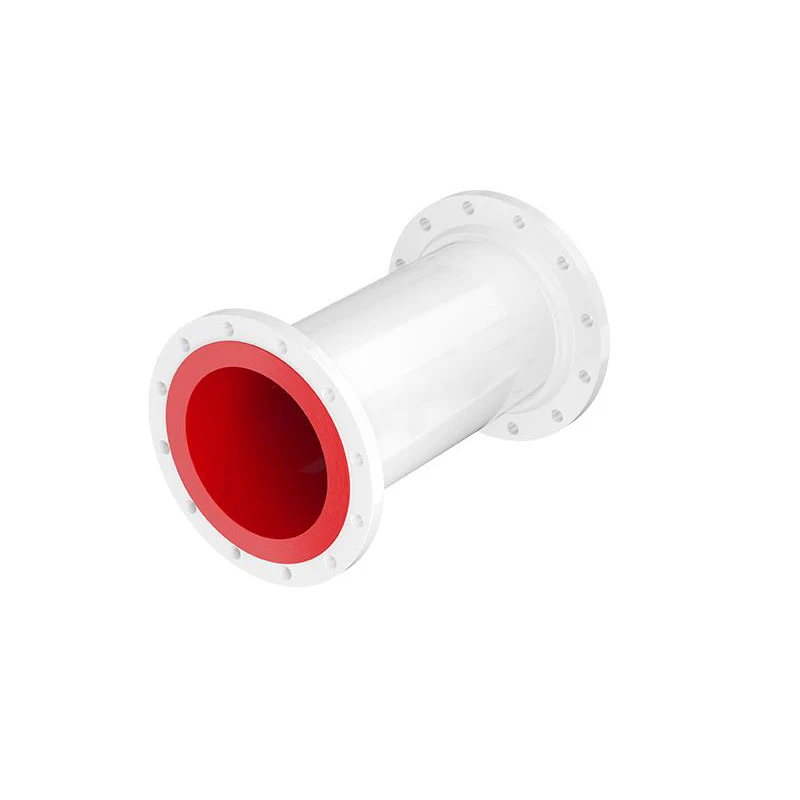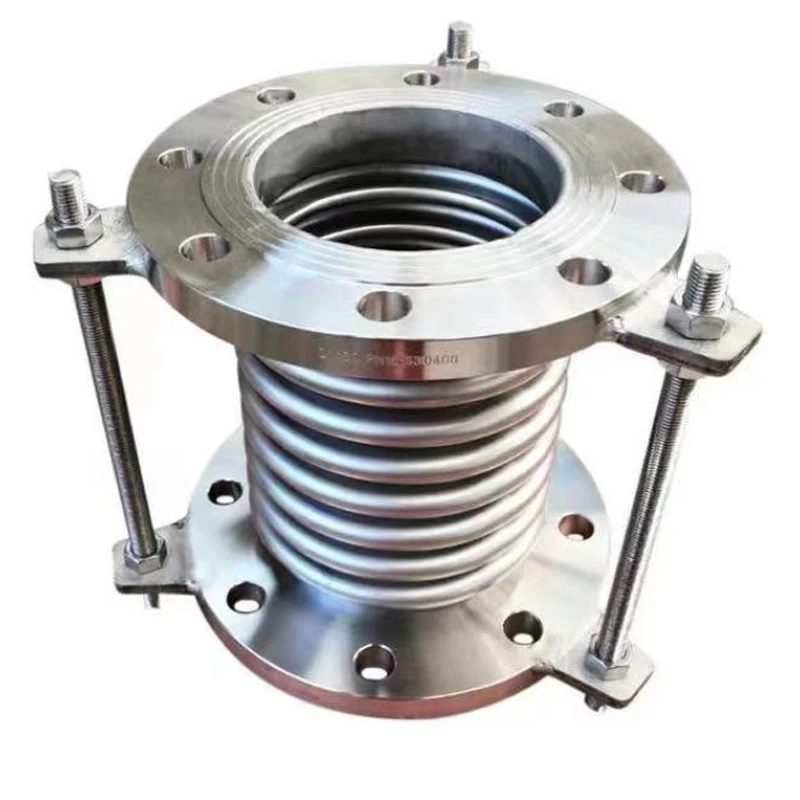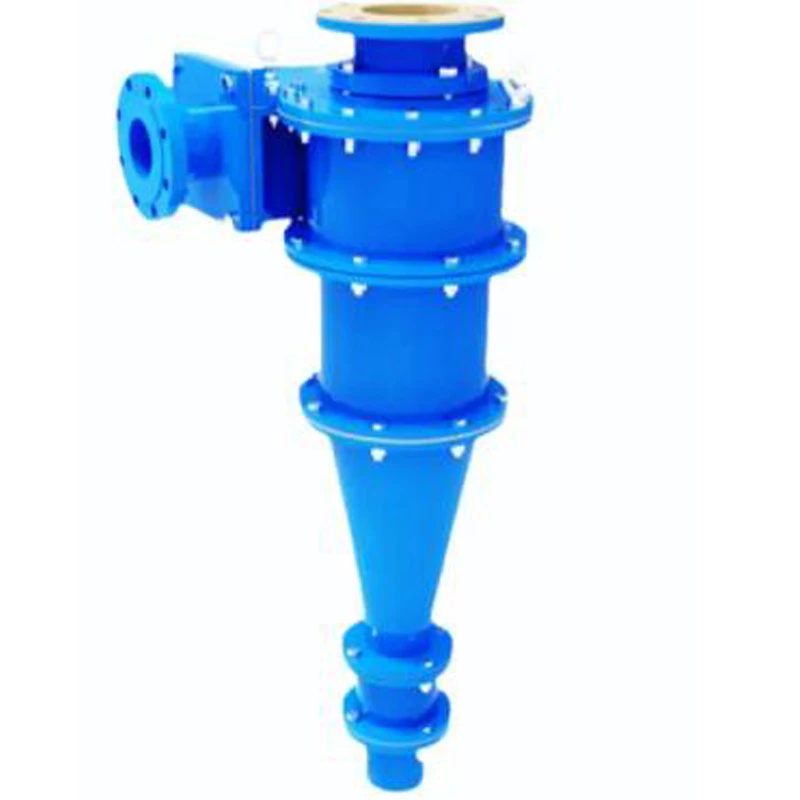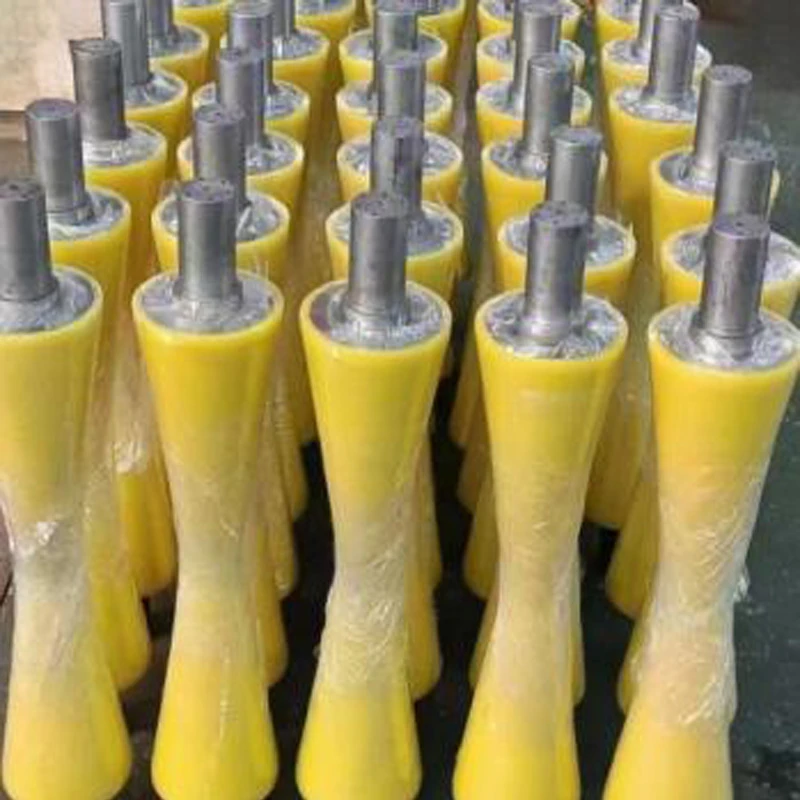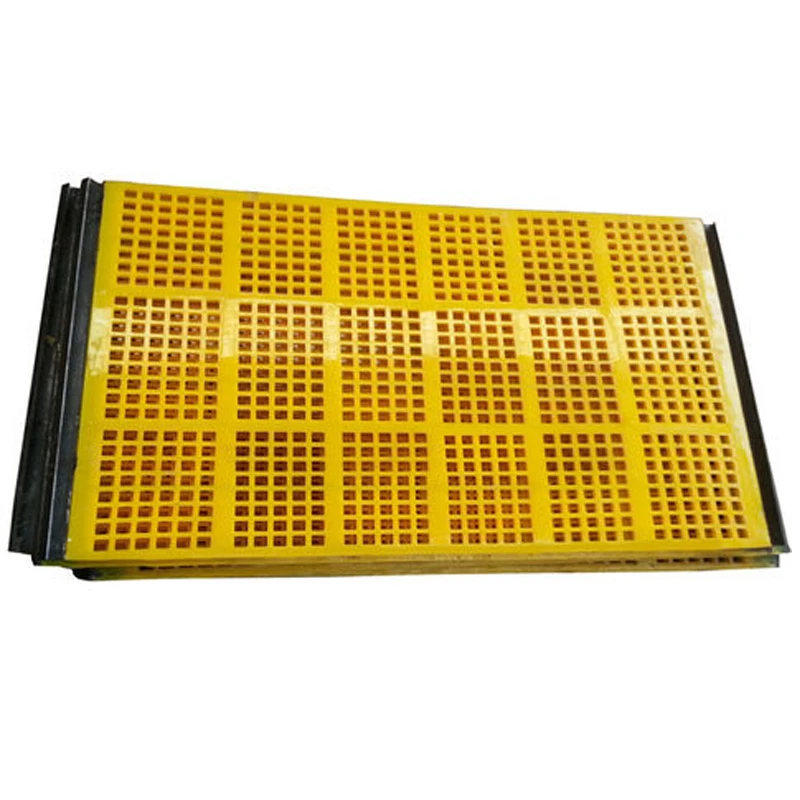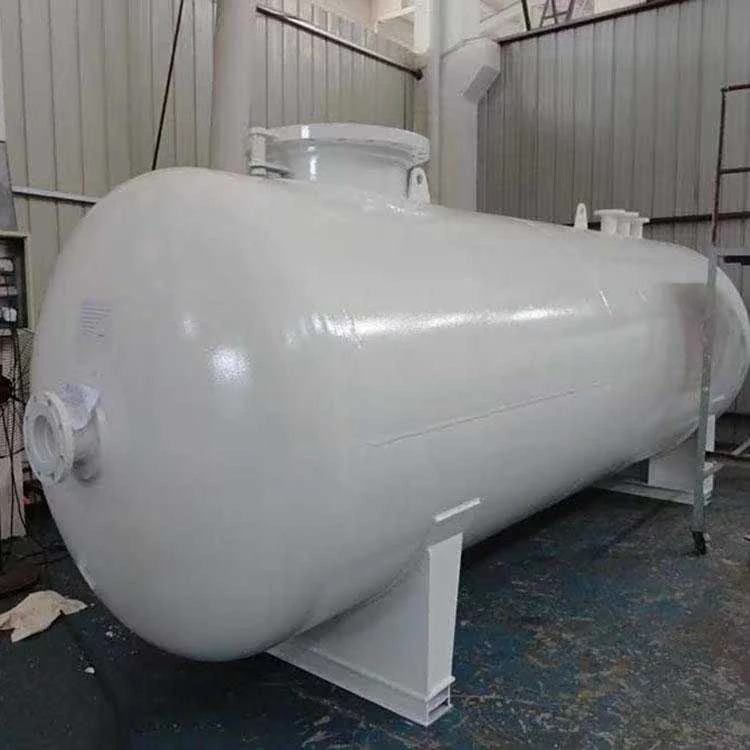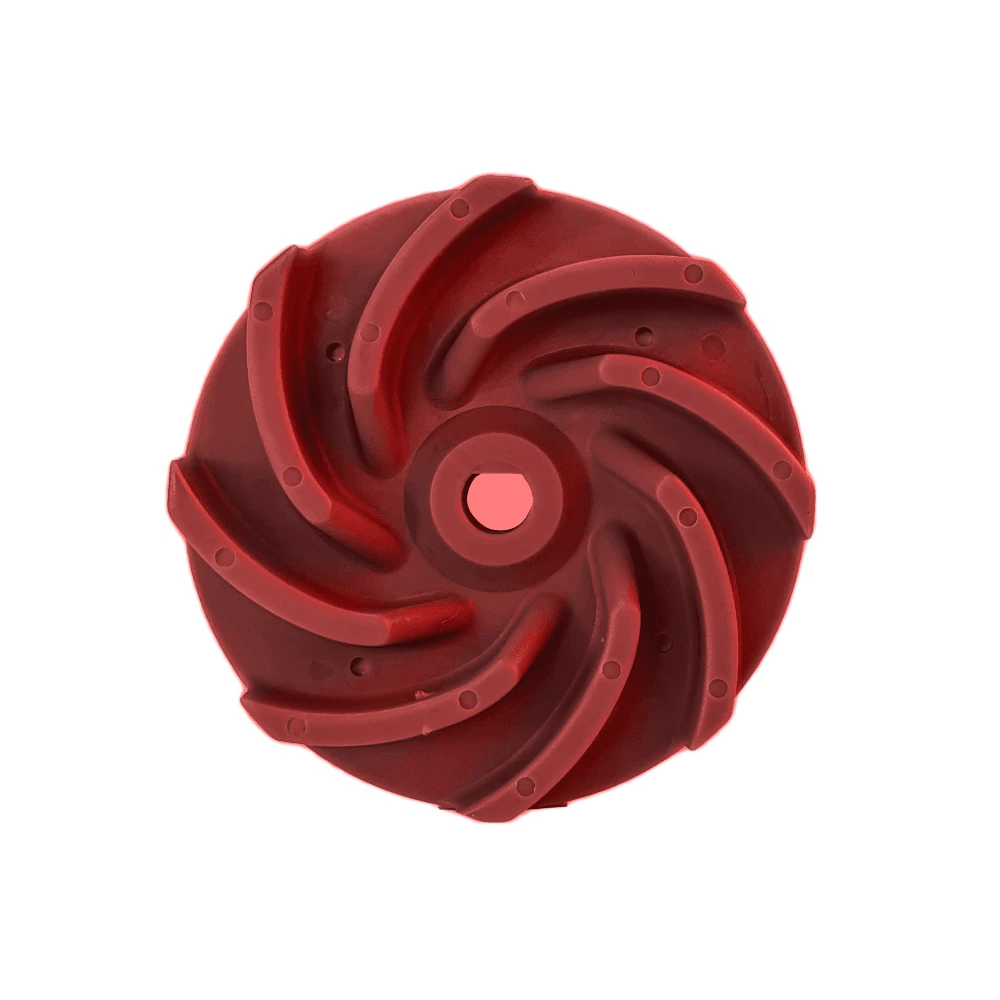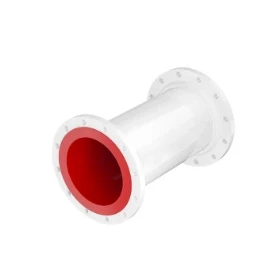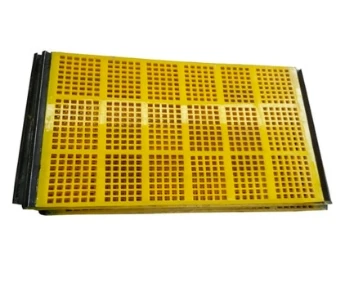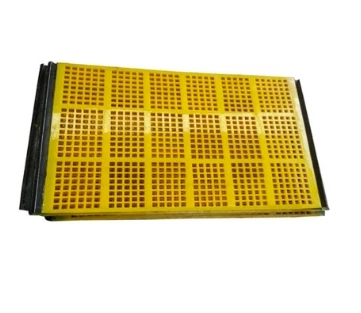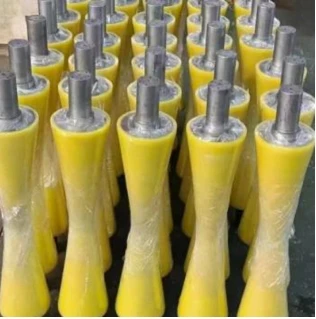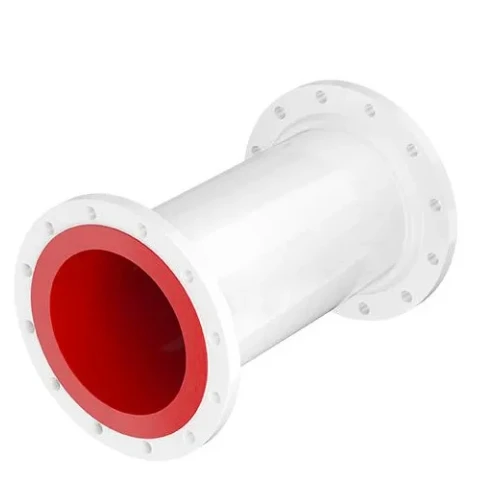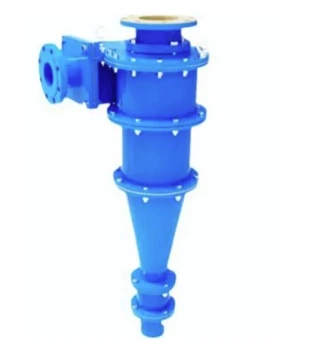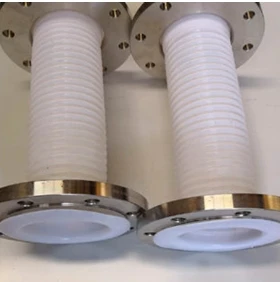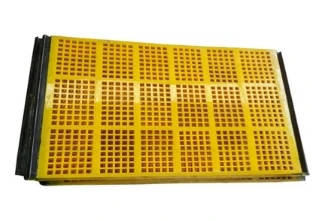: Types of Cyclone Separators: Micro, Sand & Efficient Particle Removal
Understanding the Pivotal Role of types of cyclone separator in Modern Industrial Processes
In the realm of industrial separation technologies, the types of cyclone separator stand as a cornerstone for efficient particulate removal from gas or liquid streams. Their fundamental operating principle, leveraging centrifugal force to separate solid particles or liquid droplets from a carrier fluid, makes them indispensable across a vast array of sectors. From enhancing air quality in manufacturing facilities to refining critical chemical processes, the versatility and robust design of cyclone separators have cemented their position as a preferred solution for demanding applications. This comprehensive guide delves into the intricate world of these essential devices, exploring their diverse configurations, the meticulous engineering behind their production, their critical role in optimizing industrial operations, and the strategic considerations for their selection and deployment. We will examine the core technical parameters that define their performance, analyze real-world application scenarios, and provide insights into custom solutions tailored to specific industrial challenges. Understanding the nuanced differences between various types of cyclone separator is not merely an academic exercise; it is crucial for engineers, plant managers, and procurement specialists seeking to achieve optimal process efficiency, comply with stringent environmental regulations, and reduce operational costs. The efficiency of a cyclone separator is profoundly influenced by its design, the fluid properties, and the characteristics of the particulates, necessitating a deep understanding of each variant's capabilities and limitations. Our exploration will also highlight critical advancements in design and materials science that continue to push the boundaries of what these seemingly simple devices can achieve, particularly in challenging environments requiring high-efficiency separation or extreme durability. Furthermore, the integration of advanced computational fluid dynamics (CFD) in the design phase allows for unparalleled precision in predicting performance, minimizing pressure drop, and maximizing collection efficiency across different types of cyclone separator, ensuring that modern solutions are not only effective but also highly energy-efficient.
The evolution of industrial processes has continuously driven the demand for more effective and specialized separation techniques. This continuous innovation has led to a proliferation of types of cyclone separator, each optimized for distinct operational parameters and particle characteristics. For instance, the fine particulate matter often encountered in pharmaceutical manufacturing or advanced material synthesis necessitates the precision offered by a micro cyclone separator, a testament to the engineering advancements in this field. Conversely, heavy-duty applications, such as those in mining or construction, require robust solutions capable of handling abrasive slurries, for which a sand cyclone separator is specifically engineered. The selection process is rarely straightforward, involving a careful evaluation of factors such as particle size distribution, gas or liquid flow rates, operating temperature and pressure, and the desired separation efficiency. A thorough understanding of these variables is paramount for making informed decisions that directly impact a plant's productivity, environmental footprint, and long-term operational viability. This article aims to equip industry professionals with the knowledge required to navigate these complexities, providing a technical yet accessible overview of the principles, designs, and applications of these vital industrial components. We will also touch upon the economic implications of choosing the right separator, considering factors such as initial capital expenditure versus long-term operational savings through reduced maintenance, energy consumption, and improved product purity. The global push for sustainability and stricter emission controls further underscores the importance of selecting highly efficient and reliable types of cyclone separator that can contribute to a greener industrial landscape by minimizing waste and maximizing resource recovery. This commitment to sustainability is often reflected in the design philosophy of leading manufacturers, who prioritize materials that offer extended operational lifespans and designs that facilitate easy maintenance and reduced energy consumption, thereby lowering the total cost of ownership over the entire lifecycle of the equipment.
Dissecting the Diverse Types of Cyclone Separator: Design and Functionality
The classification of types of cyclone separator primarily revolves around their geometry, inlet design, and the specific application they are designed for. Each variation aims to optimize particular performance metrics, such as collection efficiency, pressure drop, or throughput capacity. The most common distinctions include standard cyclones, high-efficiency cyclones, high-throughput cyclones, and specialized units like the micro cyclone separator and sand cyclone separator. Standard cyclones, often characterized by a relatively large diameter and a tangential inlet, are well-suited for separating coarser particles (typically >10 µm) with moderate pressure drop. Their simplicity of design and construction makes them cost-effective for bulk separation tasks, commonly found in wood processing, cement plants, and grain handling facilities. They operate by introducing the dusty gas stream tangentially into a cylindrical chamber, creating a swirling vortex. Centrifugal force drives the heavier particles towards the wall, where they lose momentum and fall into a hopper, while the cleaner gas exits through an inner vortex finder. The design parameters such as body diameter, cone length, inlet area, and outlet diameter are carefully balanced to achieve the desired separation characteristics. While not offering the highest efficiencies for fine particulates, their robustness and low maintenance requirements make them a workhorse in many industrial settings.
High-efficiency cyclones, on the other hand, are engineered to capture finer particles, often down to 2-5 µm, by increasing the centrifugal force exerted on the particles. This is typically achieved by reducing the cyclone diameter, increasing the length-to-diameter ratio (L/D ratio), and optimizing the inlet and outlet geometries. The smaller diameter results in a tighter vortex and higher tangential velocities, which enhances particle collection. However, this improved efficiency often comes at the cost of increased pressure drop across the unit, leading to higher energy consumption for the fan or pump. These types of cyclone separator are frequently employed as pre-cleaners for more advanced filtration systems, or in applications where the capture of smaller particles is critical, such as in catalyst recovery, pharmaceutical production, or fine powder processing. Multi-cyclone systems, which consist of numerous small-diameter cyclones operating in parallel, are another manifestation of high-efficiency designs, offering high volumetric flow rates while maintaining excellent fine particle collection. Each individual cyclone in a multi-cyclone array functions as a miniature high-efficiency separator, collectively providing significant processing capacity. The sophisticated design of high-efficiency cyclones often incorporates features such as volute inlets or tangential entries with specific vane angles to further optimize flow patterns and minimize turbulence, ensuring stable and predictable performance even under fluctuating load conditions.
High-throughput cyclones prioritize processing large volumes of gas or liquid with acceptable efficiency, often for coarser particles. These units feature larger diameters and modified inlet designs to minimize pressure drop and allow for higher flow rates. While their collection efficiency for very fine particles might be lower than high-efficiency models, their ability to handle massive volumes makes them ideal for applications such as primary dust collection in large industrial furnaces or power plants. The choice among these primary types of cyclone separator depends critically on the balance between efficiency, pressure drop, and capital cost. The specific operational environment, including temperature, pressure, and the corrosive or abrasive nature of the fluid and particles, also plays a significant role in material selection and structural design. For instance, in applications involving high temperatures, specialized refractory linings or exotic alloys might be required to ensure structural integrity and prolong operational life. Conversely, abrasive slurries necessitate the use of abrasion-resistant materials like ceramics or hardened steel in critical wear areas, such as the cone tip and inlet section.
Specialized Cyclone Separator Varieties: Micro and Sand Applications
The micro cyclone separator represents a specialized category designed for ultra-fine particle separation, typically targeting particles in the sub-micron to a few-micron range. These are characterized by extremely small diameters, often in the range of centimeters or even millimeters, leading to extremely high tangential velocities within the unit. The increased centrifugal force at these scales allows for the separation of particles that would otherwise escape larger, conventional cyclones. Applications for micro cyclone separator include pharmaceutical powder classification, cleanroom air purification, fine chemical processing, and advanced material synthesis where even minute impurities can compromise product quality. Their precision engineering demands stringent manufacturing tolerances and advanced material selection to withstand the high velocities and potential abrasion from very fine, hard particles. The design challenges for micro cyclones are significant, encompassing not only the fluid dynamics but also the manufacturing precision required to create such small, intricate components that can withstand operational stresses. They often operate in multi-stage configurations, with arrays of micro cyclones working in parallel or series to achieve target efficiency levels for ultra-fine particulates, making them integral components in advanced industrial air pollution control and product recovery systems where even trace amounts of fine dust can have significant implications for health, safety, or product quality. The pressure drop across these units can be considerably higher due to the extremely compact design and high flow velocities, necessitating careful system design to manage energy consumption.
In contrast, the sand cyclone separator, often referred to as a hydrocyclone when used in liquid-solid separation, is specifically engineered for handling abrasive, high-density solids like sand, grit, and other mineral particles from liquid streams. These types of cyclone separator find extensive use in mining, oil and gas drilling (desanding and desilting), wastewater treatment, and aggregate washing operations. Key design features include robust, abrasion-resistant internal linings (e.g., polyurethane, ceramic, rubber) and specialized inlet configurations that minimize wear while maximizing separation efficiency for dense particles. Unlike gas cyclones, hydrocyclones typically operate with a continuous liquid feed, with the heavier solids exiting through an underflow orifice at the bottom, and the lighter fluid (overflow) exiting through the top. The unique challenges in designing a sand cyclone separator involve managing high solids loading, extreme abrasive wear, and maintaining stable separation performance under varying feed conditions. Their conical shape, tangential entry, and apex orifice are crucial for creating the intense centrifugal forces needed to efficiently separate high-density solids. The wear resistance of materials used in these hydrocyclones is paramount for ensuring a long operational life and minimizing maintenance downtime. Modern sand cyclone separators often incorporate replaceable wear parts, facilitating quick and cost-effective maintenance. The ability to effectively remove sand and other solid contaminants is crucial for protecting downstream equipment, such as pumps, valves, and heat exchangers, from damage and blockages, thereby extending their operational lifespan and reducing overall maintenance costs in critical industrial processes.
The Meticulous Manufacturing Process and Quality Assurance for Types of Cyclone Separator
The production of high-performance types of cyclone separator is a complex process demanding precision engineering, advanced material science, and rigorous quality control. The manufacturing journey begins with the selection of appropriate materials, which are chosen based on the intended application's environmental conditions, including temperature, pressure, corrosiveness, and abrasiveness of the process fluid and particulates. Common materials include carbon steel for general applications, stainless steels (304, 316, 316L) for corrosive environments, and specialized alloys like Hastelloy or Inconel for extreme chemical resistance or high temperatures. For abrasive applications, internal surfaces may be lined with wear-resistant materials such as ceramics (e.g., alumina, silicon carbide), polyurethane, or specific grades of rubber. The precise fabrication of each component is critical to ensuring optimal aerodynamic or hydrodynamic performance. This often involves advanced manufacturing processes like CNC machining for critical components such as the vortex finder and the dust outlet, ensuring dimensional accuracy and surface finish that directly impact separation efficiency and pressure drop. The conical section, which is vital for effective particle separation, typically undergoes precise forming processes, such as rolling or pressing, followed by meticulous welding to ensure structural integrity and a smooth internal surface that minimizes particle re-entrainment.
Forging and casting processes are also employed for specific components where high strength, complex geometries, or unique material properties are required. For example, some specialized inlets or collection hoppers might be cast to ensure a seamless, robust structure. Welding procedures are meticulously controlled and performed by certified professionals, often adhering to standards such as ASME Boiler and Pressure Vessel Code, to guarantee the integrity of pressure-containing parts. Post-weld heat treatment may be applied to relieve residual stresses and enhance material properties, particularly for high-temperature or critical applications. Surface treatments, such as painting, galvanizing, or specialized coatings, are applied to external surfaces for corrosion protection and aesthetic appeal, while internal surfaces may receive specialized linings or polishing to prevent material buildup and enhance flow characteristics. The entire manufacturing process, from raw material inspection to final assembly, is subjected to stringent quality control measures. This includes non-destructive testing (NDT) methods such as ultrasonic testing (UT), radiographic testing (RT), magnetic particle testing (MPT), and liquid penetrant testing (LPT) to detect any internal or surface flaws in materials and welds. Dimensional inspections are conducted at various stages to ensure adherence to design specifications, which are crucial for the aerodynamic performance of the cyclone.
Adherence to international inspection standards is paramount for ensuring the reliability and performance of types of cyclone separator. Manufacturers typically comply with ISO 9001 for quality management systems, ensuring consistent production quality. For specific industries, compliance with standards such as ANSI/AMCA (Air Movement and Control Association) for air-handling equipment, ASME (American Society of Mechanical Engineers) for pressure vessels, and API (American Petroleum Institute) for oil and gas applications, is often a prerequisite. These certifications and standards provide assurance of the product's safety, performance, and durability. Beyond manufacturing, the expected lifespan of a cyclone separator is significantly influenced by its material selection, design, and the abrasiveness/corrosiveness of the operational environment. A well-designed and properly maintained carbon steel cyclone might last 10-15 years in non-abrasive applications, while units with specialized linings or constructed from exotic alloys can exceed 20-30 years in highly aggressive environments. Regular maintenance, including inspection for wear and tear, especially in the cone section and inlet, and prompt replacement of wear-resistant linings, can significantly extend the operational life. Preventive maintenance schedules are often recommended by manufacturers based on the specific application and projected wear rates.
The application of these meticulously manufactured types of cyclone separator spans a vast array of industries, each benefiting from their distinct advantages. In the petrochemical sector, they are vital for catalyst recovery in fluid catalytic cracking (FCC) units, ensuring maximum product yield and preventing catalyst loss, thereby offering significant economic advantages. They are also used for particle removal from flare gas streams, contributing to environmental compliance. In metallurgy, cyclones are indispensable for dust collection in smelting operations, reducing emissions and recovering valuable metal dust. For instance, in steel production, they capture iron oxide dust from blast furnace gas, which can then be recycled. In the water and wastewater treatment industry, hydrocyclones (a type of sand cyclone separator) are used for desanding and primary solids separation, protecting pumps and other equipment from abrasive wear and reducing the load on downstream filtration systems. Their ability to efficiently remove particulate matter translates into tangible advantages such as energy savings due to reduced system pressure drop and improved airflow, effective corrosion resistance through appropriate material selection, and significantly extended equipment lifespan. For instance, by effectively removing abrasive particles upstream, the operational life of expensive downstream equipment like fans, pumps, and heat exchangers is substantially prolonged, leading to lower maintenance costs and reduced downtime. This holistic approach to design, manufacturing, and application ensures that cyclone separators are not just components but critical enablers of efficient, safe, and sustainable industrial operations worldwide.
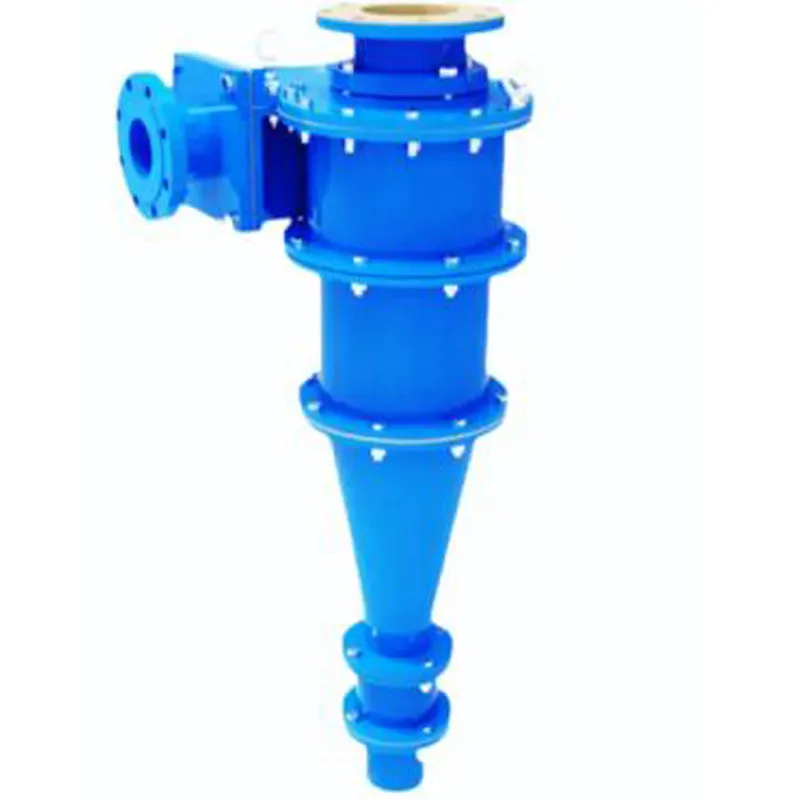
Critical Technical Parameters and Performance Metrics for Types of Cyclone Separator
The performance of any of the types of cyclone separator is quantified by several key technical parameters that engineers and process designers meticulously evaluate. Understanding these metrics is essential for selecting the appropriate unit for a given application and predicting its operational efficiency. The primary parameters include the cut point (d50), collection efficiency, and pressure drop. The cut point, often denoted as d50, is the particle diameter at which 50% of the particles are captured by the cyclone, and 50% escape with the gas or liquid stream. A smaller cut point indicates a more efficient cyclone, capable of separating finer particles. For example, a micro cyclone separator will have a significantly lower d50 compared to a standard cyclone. This parameter is directly influenced by the cyclone's geometry (diameter, length, inlet/outlet dimensions), the density of the particles, and the viscosity and velocity of the carrier fluid. Engineers often use empirical correlations or computational fluid dynamics (CFD) simulations to predict the cut point for various designs and operating conditions. Optimizing the cut point is often a balancing act, as reducing it typically leads to an increase in pressure drop and higher energy consumption.
Collection efficiency, sometimes referred to as fractional efficiency or overall efficiency, quantifies the percentage of particles removed from the gas or liquid stream. Overall efficiency considers all particle sizes, while fractional efficiency describes the collection efficiency for specific particle size ranges. High-efficiency types of cyclone separator aim for collection efficiencies exceeding 90-95% for their target particle sizes. Factors influencing collection efficiency include particle size distribution, particle density, gas/liquid velocity, cyclone diameter, and the presence of agglomeration. For instance, irregular particle shapes or highly cohesive particles can sometimes reduce efficiency. Pressure drop refers to the reduction in pressure of the carrier fluid as it passes through the cyclone. It is a critical operational cost factor, as higher pressure drop requires more energy to drive the fan or pump. There is an inherent trade-off between collection efficiency and pressure drop; generally, designs that achieve higher efficiency (smaller cut point) do so by increasing fluid velocity or creating tighter vortices, both of which result in a higher pressure drop. Therefore, selecting a cyclone involves optimizing this balance to meet separation goals while minimizing operational energy consumption. The L/D ratio (Length-to-Diameter ratio) of the cyclone's body and cone also significantly impacts performance. A longer cone generally leads to better separation efficiency by providing more residence time for particles to migrate to the wall, but it also increases pressure drop and overall unit height.
Furthermore, parameters like inlet velocity, outlet diameter, and the design of the dust discharge system (e.g., rotary valve, gravity discharge) also play crucial roles. Inlet velocity must be carefully controlled; too low a velocity may lead to insufficient centrifugal force for separation, while too high a velocity can cause re-entrainment of collected particles or excessive wear. The outlet diameter, specifically of the vortex finder, dictates the path of the cleaned fluid and impacts both efficiency and pressure drop. An optimized design ensures minimal turbulence and maximal separation. For instance, the inlet velocity for a typical gas cyclone can range from 10 to 30 m/s, depending on the desired balance between efficiency and pressure drop. For hydrocyclones, inlet pressures typically range from 5 to 50 psi. The choice of discharge mechanism is vital for ensuring continuous and effective removal of collected material without short-circuiting the gas flow or causing blockages. For example, a rotary airlock valve is commonly used for continuous discharge of dry solids, while a water seal or dipleg might be used for wet applications or to prevent air ingress. Regular monitoring of these parameters during operation is essential for troubleshooting and maintaining peak performance. Deviations from expected pressure drop or a decrease in collection efficiency can indicate issues such as wear, blockage, or changes in process conditions, necessitating immediate attention to prevent system degradation or product contamination.
Comparative Technical Specifications for Types of Cyclone Separator
To further illustrate the distinct capabilities of various types of cyclone separator, the table below provides a comparative overview of typical technical parameters. These values are indicative and can vary significantly based on specific design, manufacturer, and operating conditions. This data is synthesized from general industry benchmarks and design principles for different cyclone categories, reflecting common performance ranges observed in industrial applications.
| Parameter | Standard Cyclone (Gas) | High-Efficiency Cyclone (Gas) | Micro Cyclone Separator (Gas) | Sand Cyclone Separator (Hydrocyclone - Liquid) |
|---|---|---|---|---|
| Typical Diameter Range | 0.5m - 2.5m | 0.1m - 1.0m (Single unit) | 0.01m - 0.1m (Multi-unit arrays) | 0.1m - 1.2m |
| Typical Cut Point (d50) | >10 µm | 2 - 10 µm | 0.5 - 2 µm | 15 - 150 µm (Solids) |
| Overall Collection Efficiency | 70% - 90% | 90% - 99% | 95% - 99.9% | 80% - 98% (for target solids) |
| Typical Pressure Drop | 200 - 800 Pa (0.8 - 3.2 in H2O) | 800 - 2500 Pa (3.2 - 10 in H2O) | 2500 - 5000+ Pa (10 - 20+ in H2O) | 10 - 70 kPa (1.5 - 10 psi) |
| Inlet Velocity/Pressure | 15 - 25 m/s | 18 - 30 m/s | 20 - 40 m/s | 35 - 350 kPa (5 - 50 psi) |
| Typical Materials of Construction | Carbon Steel, Stainless Steel | Stainless Steel, High-Performance Alloys | Stainless Steel, Ceramic-lined, Glass | Steel with Rubber/Polyurethane/Ceramic Linings |
| Applicable Particle Types | Coarse Dust, Wood Chips, Granules | Fine Dust, Powders, Catalysts | Ultra-fine Powders, Fumes, Aerosols | Sand, Silt, Mineral Slurries |
This table clearly illustrates the specialized nature of different types of cyclone separator. For example, the micro cyclone separator achieves incredibly low cut points and high efficiencies, but this comes at the cost of higher pressure drop and the need for precision manufacturing and often multi-unit configurations. Conversely, a sand cyclone separator is designed to handle very high solids loading and abrasive conditions in liquid systems, with its efficiency measured differently (solids recovery vs. particle removal from gas). The selection of the most suitable cyclone is therefore a multi-criteria decision process, balancing initial investment, operational costs (energy consumption), required separation efficiency, and long-term maintenance implications. Factors like particle agglomeration, moisture content, and static charge can also influence real-world performance compared to theoretical predictions. An experienced manufacturer will consider all these variables, leveraging their expertise and computational tools to recommend the optimal solution for a client's specific process needs.
Application Scenarios and Strategic Advantages of Various Types of Cyclone Separator
The ubiquitous presence of types of cyclone separator across diverse industrial landscapes underscores their versatility and effectiveness in particle removal. Their application spans from heavy industries like petrochemicals and metallurgy to more sensitive sectors such as pharmaceuticals, food processing, and environmental protection. Each industry leverages specific cyclone characteristics to meet its unique operational and regulatory demands. In the petrochemical industry, for example, cyclones are critical components in fluid catalytic cracking (FCC) units, where they separate catalyst particles from hydrocarbon vapor streams to prevent catalyst loss and ensure product purity. The high temperatures and corrosive nature of these environments demand cyclones made from specialized alloys like Inconel or Hastelloy, often with refractory linings to withstand thermal stress and erosion. The design must minimize catalyst attrition while maximizing recovery, directly impacting the economic viability of the refining process. Similarly, in power generation, especially in coal-fired power plants, large diameter types of cyclone separator are used as pre-cleaners to remove coarse fly ash before gases enter more expensive baghouses or electrostatic precipitators, extending the life of downstream equipment and reducing overall filtration costs. Their robustness allows them to handle high dust loadings and fluctuating temperatures inherent in flue gas treatment.
The metallurgical industry extensively utilizes cyclones for dust collection in various processes, including smelting, grinding, and material handling. Here, they capture valuable metal dust (e.g., iron, lead, zinc) for recycling, concurrently improving air quality and worker safety. The abrasive nature of metal dust often necessitates robust construction and wear-resistant liners. For instance, in ferroalloy production, cyclones effectively capture fine silica fume and other particulate matter, which are hazardous if released into the atmosphere and can also represent a significant loss of valuable material if not recovered. In the realm of environmental engineering and municipal services, particularly within water and wastewater treatment, the sand cyclone separator (hydrocyclone) is invaluable. These units efficiently remove sand, grit, and other settleable solids from influent water, protecting pumps, valves, and other mechanical equipment from abrasion and blockages. This pre-treatment step significantly reduces the maintenance burden and extends the lifespan of expensive downstream treatment components like clarifiers and filters. For example, in municipal wastewater treatment plants, desanding hydrocyclones are critical in the preliminary treatment phase, preventing accumulation of abrasive solids in aeration tanks and digesters, thus improving overall plant efficiency and reducing operational costs.
Beyond heavy industry, specialized types of cyclone separator play pivotal roles in fine particle management. A micro cyclone separator is essential in pharmaceutical manufacturing for powder classification, ensuring precise particle size distribution for drug formulations, or for active pharmaceutical ingredient (API) recovery, minimizing product loss and ensuring process purity. In the food industry, they are used for separating food particles (e.g., flour dust, coffee bean husks) from air streams during processing, contributing to hygiene and product quality. Their stainless steel construction and easy-to-clean designs are paramount in these hygienic applications. The technical advantages of deploying appropriate types of cyclone separator are multifaceted. Foremost is energy efficiency; by acting as effective primary collectors, they reduce the load on energy-intensive final filters, leading to significant power savings over time. Their inherent design is often simpler than other filtration technologies, translating to lower capital expenditure and reduced maintenance requirements. Furthermore, specific materials and coatings ensure exceptional corrosion resistance, extending the operational lifespan in aggressive chemical environments. For example, in sulfuric acid plants, cyclones made with specialized corrosion-resistant alloys effectively manage acid mist removal from gas streams.
Another significant advantage is their ability to handle high-temperature gas streams and high dust loadings, conditions where bag filters or electrostatic precipitators might struggle. Their lack of moving parts makes them inherently robust and reliable, requiring minimal supervision and maintenance compared to other separation technologies. This reliability translates directly into reduced downtime and higher overall plant productivity. The ability to recover valuable materials, as seen in metallurgical and chemical applications, adds an economic benefit that often offsets the initial investment. Moreover, by reducing particulate emissions, cyclones contribute significantly to environmental compliance, helping industries meet stringent air quality standards and avoid penalties. The modularity of multi-cyclone systems allows for scalable solutions, meaning systems can be designed to handle a wide range of flow rates by adding or removing individual cyclone units. This flexibility is particularly beneficial for processes with variable loads. Ultimately, the strategic selection and deployment of the right types of cyclone separator not only optimize process efficiency but also enhance safety, sustainability, and profitability across a broad spectrum of industrial applications, making them an enduring and evolving technology in particle separation.
Strategic Manufacturer Comparison and Tailored Custom Solutions for Types of Cyclone Separator
When sourcing types of cyclone separator, B2B decision-makers are faced with a diverse market of manufacturers, each offering distinct advantages in terms of design expertise, material quality, production capabilities, and after-sales support. A strategic approach to manufacturer comparison goes beyond mere price points, delving into critical aspects such as a company's proven track record, technological innovation, adherence to international standards, and capacity for custom engineering. Leading manufacturers differentiate themselves through their deep understanding of fluid dynamics and particle separation principles, leveraging advanced simulation tools like Computational Fluid Dynamics (CFD) to optimize cyclone designs for specific operational parameters. This allows for highly accurate predictions of cut point, pressure drop, and collection efficiency, minimizing the need for costly trial-and-error in real-world applications. Companies with extensive experience in the field, particularly those with a history of designing and deploying various types of cyclone separator across challenging industries, typically offer superior solutions. Their accumulated knowledge translates into robust designs, appropriate material selection for extreme conditions (e.g., high temperature, corrosive media, abrasive particles), and an understanding of nuanced operational requirements. For example, a manufacturer specializing in sand cyclone separator will possess specific expertise in wear-resistant linings and discharge systems tailored for high solids loading, a capability that generic manufacturers might lack.
Moreover, companies committed to continuous innovation are vital partners. This includes research into new materials, improved geometries, and integration with advanced control systems for real-time performance monitoring. For example, the development of smaller, more efficient micro cyclone separator for pharmaceutical or semiconductor industries requires substantial R&D investment and precision manufacturing capabilities. Beyond design, a manufacturer's production capabilities—including their ability to execute various fabrication processes (casting, forging, CNC machining, specialized welding)—directly impacts the quality and reliability of the final product. Facilities with ISO 9001 certification and adherence to industry-specific codes like ASME, ANSI, and API signify a commitment to stringent quality control and manufacturing excellence. Furthermore, a strong emphasis on service and support is a non-negotiable criterion. This encompasses responsive technical assistance, availability of spare parts, and comprehensive maintenance guidelines. A reputable manufacturer will offer detailed engineering support throughout the project lifecycle, from initial consultation and design to installation guidance and post-commissioning optimization. This holistic support minimizes risks and ensures the long-term optimal performance of the installed equipment.
One of the most significant advantages offered by top-tier manufacturers is their capacity for tailored design and custom solutions. While standard types of cyclone separator are suitable for many applications, complex industrial processes often present unique challenges that necessitate bespoke engineering. This might involve designing a cyclone to operate efficiently under extremely high pressures or temperatures, handling highly corrosive or explosive dusts, or achieving ultra-high efficiencies for sub-micron particle removal. Customization can involve modifying existing designs, such as adjusting the L/D ratio, optimizing inlet and outlet configurations, or incorporating specialized anti-abrasion/corrosion linings. For instance, in an application requiring extremely fine particle separation but with a limited footprint, a custom-designed compact multi-cyclone system, potentially featuring an array of micro cyclone separator units, might be the ideal solution. Similarly, for a mining operation dealing with highly abrasive slurries, a manufacturer might design a sand cyclone separator with specific ceramic inserts in wear-prone areas, ensuring longevity and consistent performance under severe conditions.
The process of developing custom solutions typically involves a collaborative approach. It begins with a detailed assessment of the client's specific process parameters, including flow rates, particle size distribution, fluid properties, operating conditions, and desired separation efficiency. Based on this data, the manufacturer's engineering team will develop conceptual designs, often utilizing advanced CFD modeling to simulate performance and identify potential optimizations before physical fabrication begins. This iterative design process ensures that the final solution is perfectly matched to the application, avoiding costly over-engineering or under-performance. The ability to provide comprehensive documentation, including detailed drawings, performance curves, and operational manuals, further distinguishes a superior custom solution provider. This attention to detail not only facilitates smooth integration and operation but also aids in future maintenance and troubleshooting. Choosing a manufacturer that prioritizes custom engineering capabilities ensures that the investment in types of cyclone separator yields optimal performance, maximizes process efficiency, and provides a long-term, reliable solution for the most demanding industrial separation challenges.
Real-World Application Cases and Demonstrating Experience with Types of Cyclone Separator
Practical application cases serve as compelling evidence of a manufacturer's expertise and the proven effectiveness of their types of cyclone separator. These examples highlight successful deployments, client feedback, and the tangible benefits realized in diverse industrial settings. One notable case involves a large-scale cement manufacturing plant facing significant challenges with particulate emissions from its clinker cooler exhaust. The existing dust collection system struggled to meet increasingly stringent environmental regulations, leading to potential fines and operational interruptions. After a detailed analysis of the flue gas characteristics, including temperature (up to 350°C), flow rate (approximately 150,000 Am³/h), and a wide particle size distribution (from 5 µm to 200 µm), a custom-engineered multi-cyclone system was recommended. This system comprised several high-throughput, high-temperature resistant cyclone units operating in parallel. Constructed from specialized high-temperature alloys and featuring abrasion-resistant internal linings in the conical sections, the system was designed to handle the abrasive nature of cement dust effectively. Post-installation, the plant reported a reduction in particulate emissions by over 90% at the cyclone stage, significantly easing the load on the downstream baghouse and allowing them to comfortably meet local emission standards. This also translated to a substantial reduction in baghouse filter replacement frequency, saving the plant an estimated $150,000 annually in maintenance costs and downtime. This particular case underscored the advantage of selecting robust types of cyclone separator for primary dust collection in demanding, high-volume applications, showcasing their ability to enhance environmental compliance while delivering measurable economic benefits.
Another compelling example comes from a specialty chemical producer experiencing product loss and quality issues due to fine powder entrainment in their reactor off-gas. The target product was a valuable catalyst with a particle size distribution primarily below 5 µm. Conventional separation methods proved insufficient, leading to significant material waste and purity concerns. After consulting with a leading manufacturer, a highly specialized solution involving an array of parallel-configured micro cyclone separator units was proposed. These micro cyclones, each with an internal diameter of less than 100 mm, were precision-machined from corrosion-resistant stainless steel to handle the slightly acidic process gases and recover the ultra-fine catalyst particles. The compact design of the micro cyclone system allowed for integration into the existing facility layout without extensive structural modifications. Upon commissioning, the client observed an impressive 98.5% recovery rate for catalyst particles in the 1-5 µm range, far exceeding previous capabilities. This enhanced recovery not only led to substantial savings from reduced raw material consumption but also ensured the consistent purity of the final chemical product, which was critical for its downstream applications. The feedback from the client emphasized the expertise of the manufacturer in designing and delivering solutions for challenging fine-particle separation, transforming a significant operational bottleneck into a streamlined, efficient process. This case specifically highlighted the cutting-edge capabilities of highly specialized types of cyclone separator in niche, high-value applications.
Furthermore, an instance from the mining industry showcased the critical role of a sand cyclone separator in a mineral processing plant. The client was struggling with excessive wear on their downstream pumping equipment due to high concentrations of abrasive sand particles in their mineral slurry. Their existing system was inefficient, leading to frequent pump failures and substantial maintenance costs. A robust sand cyclone separator (hydrocyclone) system, featuring multiple units constructed with heavy-duty steel and internally lined with high-wear-resistant polyurethane, was installed upstream of the pumps. The specific design optimized the apex and vortex finder to maximize the separation of high-density sand particles while minimizing fluid loss. The results were immediate and impactful: the desanding efficiency for particles greater than 75 µm reached over 95%, significantly reducing the abrasive load on the pumps. Within six months of operation, the plant reported a 70% reduction in pump maintenance expenditures and a 50% extension in pump lifespan, leading to millions of dollars in long-term savings. The plant manager lauded the system's reliability and minimal operational intervention required, stating, "The new sand cyclones have been a game-changer for our plant's operational stability and cost efficiency. They simply work, consistently and reliably, even under the most demanding conditions." These diverse application cases collectively underscore the strategic importance of selecting the right types of cyclone separator and partnering with a manufacturer that possesses deep technical expertise and a proven track record of delivering measurable results in real-world industrial environments. Such experience builds significant trust and authority in the marketplace.
Addressing Common Inquiries: FAQ, Delivery, Warranty, and Support for Types of Cyclone Separator
Navigating the procurement and implementation of industrial equipment, especially specialized units like various types of cyclone separator, often raises numerous questions for B2B clients. Transparency in addressing these common inquiries builds trustworthiness and reinforces confidence in the manufacturer. Here, we provide an overview of frequently asked questions, along with details regarding delivery, warranty, and comprehensive customer support, reflecting a commitment to client satisfaction and long-term partnership.
Frequently Asked Questions (FAQ) about Types of Cyclone Separator:
- Q1: How do I determine the best type of cyclone separator for my specific application?
A1: The optimal choice among the various types of cyclone separator depends on several factors: particle size distribution, desired collection efficiency, gas/liquid flow rate, operating temperature and pressure, and the chemical/abrasive nature of the process stream. Our engineering team provides complimentary consultation, using detailed process data to recommend the most suitable design, whether it's a standard cyclone, a high-efficiency model, a micro cyclone separator, or a specialized sand cyclone separator. We utilize advanced simulation tools to ensure an accurate recommendation tailored to your unique needs. - Q2: What is the typical lifespan of a cyclone separator, and how can it be extended?
A2: The lifespan varies significantly based on material selection, design, and operational conditions. A well-designed cyclone made from appropriate materials (e.g., stainless steel for corrosive environments, ceramic linings for abrasive dusts) can last 15-30 years or more. Regular preventive maintenance, including routine inspections for wear, especially in the cone and inlet sections, and prompt replacement of wear linings, are crucial for extending operational life. Proper system operation within design parameters also minimizes premature wear. - Q3: Can your cyclone separators handle explosive or high-temperature dusts?
A3: Yes, we design and manufacture types of cyclone separator suitable for challenging environments. For explosive dusts (e.g., combustible dusts), our designs incorporate features such as explosion vents and adherence to NFPA standards. For high-temperature applications, we utilize specialized refractory linings or high-performance alloys (e.g., Hastelloy, Inconel) capable of withstanding extreme thermal loads up to 1000°C or higher, ensuring structural integrity and consistent performance. - Q4: What are the primary advantages of using a cyclone separator over other dust collection technologies like bag filters or scrubbers?
A4: Cyclones offer several distinct advantages: they have no moving parts, resulting in lower maintenance and higher reliability; they can handle high temperatures and heavy dust loads that might overwhelm other systems; they have a relatively low capital cost; and they offer excellent corrosion and abrasion resistance when properly specified. While not always achieving the highest efficiencies for sub-micron particles, they excel as pre-cleaners, extending the life and reducing the operational costs of downstream fine filtration systems. - Q5: How do you ensure the quality and performance of your cyclone separators?
A5: We adhere to a stringent quality management system certified under ISO 9001. Our manufacturing processes include rigorous material testing, advanced fabrication techniques (e.g., precision CNC machining, certified welding), and comprehensive non-destructive testing (NDT) such as ultrasonic and radiographic inspections. All designs are validated through extensive R&D and often with CFD simulations. Our products meet or exceed relevant industry standards like ASME, ANSI, and API, ensuring superior quality and reliable performance across all types of cyclone separator we produce.
Delivery Cycle and Logistics:
Our streamlined production process and robust supply chain management enable efficient delivery of all types of cyclone separator. For standard models, the typical lead time ranges from 8 to 12 weeks from order confirmation to shipment, depending on the complexity and current production schedule. Custom-engineered solutions or large-scale projects, such as multi-cyclone arrays or specialized micro cyclone separator systems, may require a longer lead time, generally between 14 to 20 weeks, to account for detailed design, material procurement, and bespoke fabrication. We work closely with trusted logistics partners to ensure safe and timely delivery to your specified location worldwide. All shipments are meticulously packed to prevent damage during transit, with larger units often disassembled for easier transport and reassembly on-site. We provide comprehensive shipping documentation, including customs declarations and packing lists, to facilitate smooth customs clearance and minimize delays. Our commitment to transparent communication means clients are regularly updated on their order status, from manufacturing progress to shipping milestones, providing peace of mind throughout the entire delivery process.
Warranty and After-Sales Support:
We stand behind the quality and performance of our types of cyclone separator with a comprehensive warranty program. All new cyclone separators typically come with a standard 12-month warranty from the date of commissioning or 18 months from the date of shipment, whichever comes first. This warranty covers defects in materials and workmanship, providing clients with assurance in their investment. Extended warranty options are also available upon request for enhanced peace of mind. Our commitment to clients extends far beyond delivery. Our dedicated after-sales support team is available to provide technical assistance, troubleshooting, and operational guidance throughout the lifespan of your equipment. This includes remote support via phone and email, and if necessary, on-site service by our experienced field engineers for complex issues or preventive maintenance visits. We maintain a comprehensive inventory of genuine spare parts for all types of cyclone separator we manufacture, ensuring rapid availability for critical components and minimizing potential downtime. Our technical support extends to assisting with performance optimization, identifying potential upgrades, and providing training for your operational staff to ensure they are proficient in maintaining and operating the equipment effectively. This robust support infrastructure underscores our dedication to fostering long-term partnerships and ensuring the sustained success of your operations.
Industry Trends and Future Outlook for Types of Cyclone Separator
The landscape for types of cyclone separator is continuously evolving, driven by several key industry trends focused on enhanced efficiency, environmental sustainability, and technological integration. One prominent trend is the increasing demand for higher separation efficiencies, particularly for fine and ultra-fine particulate matter. This is fueled by stricter environmental regulations worldwide, which are progressively lowering permissible emission limits across industries. Consequently, there is a sustained push towards more advanced high-efficiency and micro cyclone separator designs. Manufacturers are investing heavily in research and development to refine cyclone geometries, optimize inlet and outlet designs, and explore novel internal structures that can achieve smaller cut points with minimal energy penalty. The integration of multi-cyclone systems, where numerous small cyclones operate in parallel, is becoming more prevalent as a scalable solution to handle large gas volumes while maintaining high collection efficiencies for fine particles. This modularity allows for greater operational flexibility and easier maintenance, as individual units can be serviced without shutting down the entire system.
Another significant trend is the growing emphasis on energy efficiency and reduced operational costs. While cyclones are inherently energy-efficient compared to some other separation technologies, efforts are ongoing to minimize pressure drop without compromising separation performance. This involves optimizing internal flow patterns through advanced computational fluid dynamics (CFD) modeling, identifying and mitigating areas of high turbulence, and improving particle disengagement from the gas stream. The adoption of smart materials and advanced coatings is also gaining traction, particularly for types of cyclone separator operating in abrasive or corrosive environments. Developments in ceramic, polymer, and composite linings are extending the lifespan of cyclones in challenging applications like mineral processing (for sand cyclone separator) or high-temperature chemical reactions, thereby reducing maintenance frequency and associated costs. The push for circular economy principles is also influencing cyclone design, with increased focus on material recovery and recycling. Cyclones are playing a critical role in separating valuable by-products from waste streams, transforming what was once a disposal cost into a revenue stream. This includes the recovery of catalysts, metal dusts, and fine chemical powders, contributing to resource efficiency and reducing overall waste generation across various industrial sectors.
The digital transformation of industry, often referred to as Industry 4.0, is also impacting the design and operation of types of cyclone separator. The integration of sensors for real-time monitoring of key performance indicators such as pressure drop, temperature, and dust loading is becoming more common. This data, coupled with predictive analytics and artificial intelligence, allows for proactive maintenance scheduling, early detection of operational anomalies, and continuous optimization of cyclone performance. For example, machine learning algorithms can analyze historical operational data to predict wear patterns in a sand cyclone separator and recommend optimal timing for liner replacements, thereby preventing catastrophic failures and minimizing downtime. This level of predictive capability represents a significant leap forward from traditional time-based maintenance schedules. Furthermore, the increasing complexity of industrial processes and the need for tailor-made solutions are driving greater demand for custom-engineered types of cyclone separator. Manufacturers are enhancing their capabilities in bespoke design, leveraging advanced simulation, rapid prototyping, and additive manufacturing techniques to deliver highly specialized units that precisely meet unique client requirements, often in novel applications. This customization capability is becoming a key differentiator in a competitive market.
Looking ahead, the future of types of cyclone separator will likely see continued innovation in these areas. We anticipate further advancements in ultra-fine particle separation capabilities, potentially bridging the gap with more energy-intensive filtration technologies for certain applications. The development of hybrid separation systems, combining cyclones with other technologies (e.g., electrostatic precipitators or bag filters), will also gain prominence to achieve synergistic benefits in efficiency and cost. The emphasis on sustainable manufacturing practices, from material sourcing to end-of-life recycling, will also shape future designs. Overall, as industries continue to face pressure for higher efficiency, stricter environmental compliance, and greater operational intelligence, the role of specialized and technologically advanced types of cyclone separator will only grow, solidifying their status as indispensable components in the global industrial landscape. The ongoing research into computational fluid dynamics (CFD) and discrete element method (DEM) simulations promises even more precise design and optimization, allowing engineers to model complex particle-fluid interactions within the cyclone with unprecedented accuracy, leading to breakthrough designs that redefine efficiency and operational envelopes.
References and Further Reading:
- Gupta, S. K., & Gupta, P. K. (2004). Industrial wastewater treatment: a guide to process and equipment selection. Elsevier. (Link for general reference on industrial treatment)
- Lapple, C. E. (1951). Processes Notes. Journal of the American Institute of Chemical Engineers, 3(4), 51-58. (Reference for foundational cyclone theory)
- Hoffmann, A. C., & Stein, L. E. (2007). Cyclone separators: modeling, analysis, design, and optimization. Springer Science & Business Media. (Authoritative text on cyclone design)
- Wang, P., & Cheng, Y. (2018). Numerical Simulation of a Multi-Cyclone Separator Based on Eulerian-Lagrangian Method. Powder Technology, 339, 796-805. (Academic journal article on CFD in multi-cyclones)
- ISO 9001:2015 - Quality management systems — Requirements. (International standard for quality management)
- American Society of Mechanical Engineers (ASME) Boiler and Pressure Vessel Code. (Industry standard for pressure vessels)
Related Products
Our main products are polyurethane lined pipes, mining equipment fittings and metal hoses.




